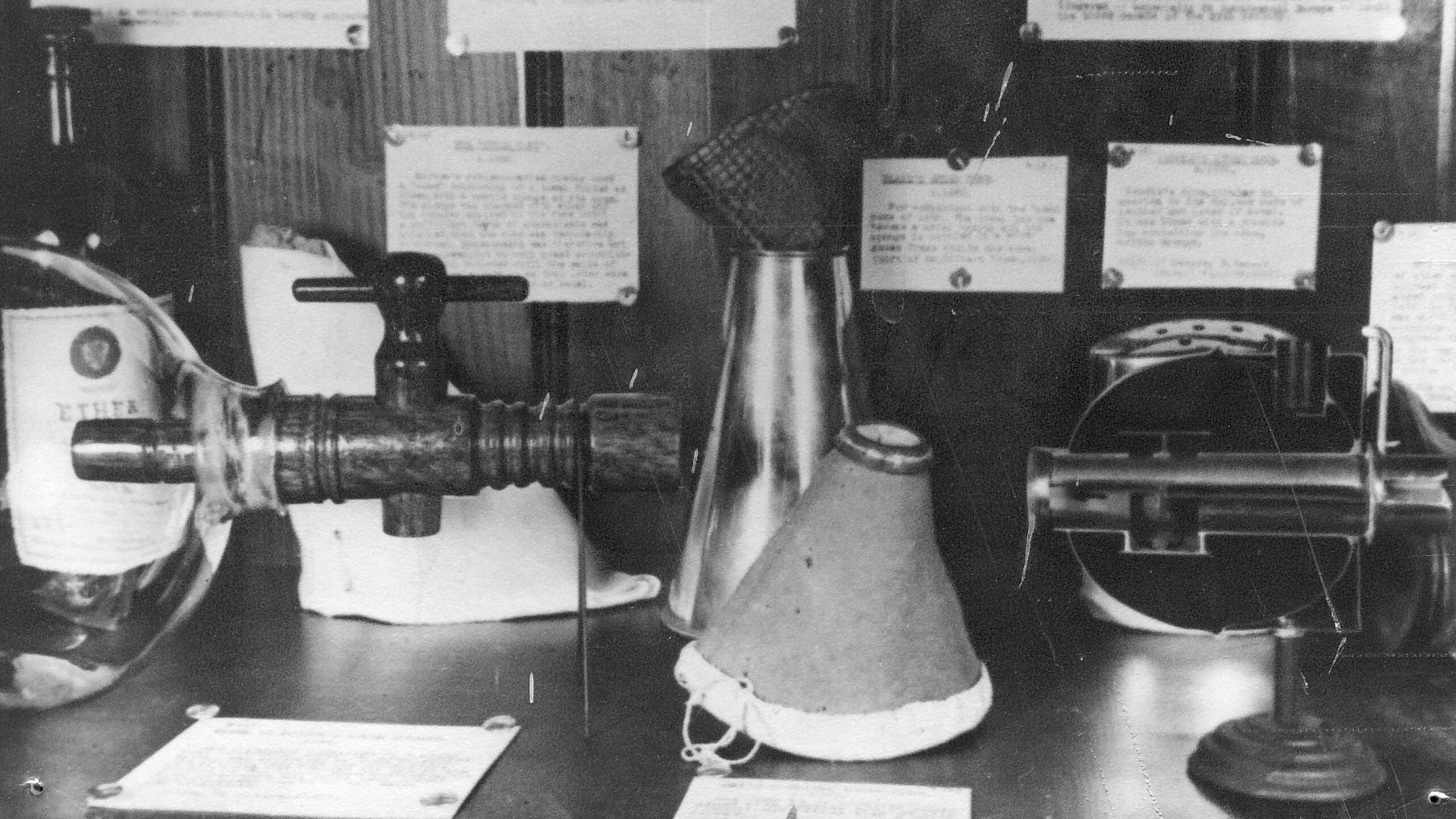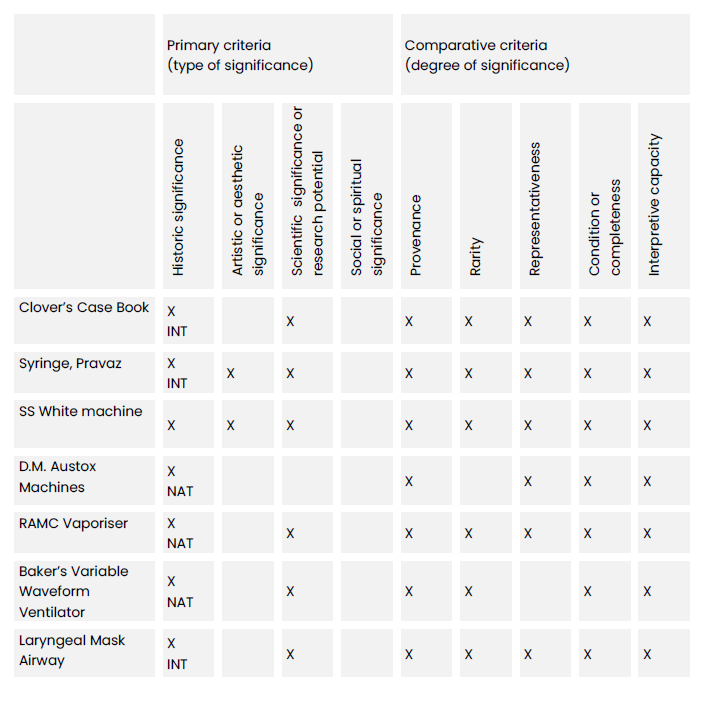In December 2022, we commissioned Dr Megan Cardamone from Circa Museum Services to undertake a whole of collection significance assessment. For quite a while we’ve thought the collection was one of international and national significance, and we wanted an independent investigation to back that up (or disprove it, as the case may be). We even boldly made that statement on our marketing material.

Inside of marketing brochure with the bold statement that the Geoffrey Kaye Museum of Anaesthetic History is one of “the largest and most diverse collections of its type in the world.
In February 2023, Megan spent the day onsite with us opening drawers and cupboards, looking at all the objects and talking about their history, the history of the museum and our namesake, Geoffrey Kaye. Between now and then, we’ve had quite a few conversations, pulled up some research for her, and introduced her to a host of other people who have worked with the collection in some way and also had a lot to say about it.
Last week, we got the full report back and we’re delighted. Megan wrote:
“The GKM Collection is the largest collection worldwide with a focus on anaesthesia and related fields of pain medicine, intensive care and resuscitation. It is also one of the most comprehensive with an international scope but a strong focus on the field’s Australasian history. There are items of national and international significance in the Collection but the Collection is also extremely significant as a whole.”
A significance assessment requires an analysis of the collection, research into its history, provenance, and context, comparison with similar collection, understanding its values by reference to the criteria and, finally, summarising its meanings and values in a statement of significance. This can be done on individual objects or on the whole collection. We went for the whole of collection option.
There are four criteria against which significance is measured:
- Historic
- Artistic or aesthetic
- Scientific or research potential, and
- Social or spiritual.
If you want to read more about significance, check out Significance 2.0, the industry standard for assessing significance.
Megan noted the way in which Geoffrey Kaye set up the museum was deliberately intended to create an international scope. While scavenging through hospital cupboards looking for objects to include, he always corresponded with others who shared his interest, exchanging pieces here and there, and giving many away. Megan wrote:
“Every day, collecting organisations are making judgements about which items and collections will be collected, conserved, researched and made accessible. These are profound decisions that shape what future generations will know and understand about the past and present.”
So, cheers to Geoffrey Kaye for his foresight in making really good decisions about what to include.
There have been many other people involved in the development of the museum since its beginnings in 1935. A series of volunteer, or honorary, curators have taken on the task and in about 2003, professional curators came onboard. It’s certainly changed a lot since the early days, although there’s a lot to be said for a cabinet of curiosities approach to curating.

Old displays have a certain charm
Dr Christine Ball is the current Honorary Curator and upon discovering Joseph Clover’s 1846 casebook in the collection, went on to write the incredible Clover biography, The Chloroformist. We normally don’t “discover” objects in the collection. We usually know they’re there. But, on this occasion it had been enclosed in a frame with only one page visible and it wasn’t until the frame was removed anybody realised it was a full casebook.
From a collection of around 9,500 objects, we were asked to select seven we thought were the most significant. It looks like we chose well, because it’s a pretty even split between national and international significance.

The most significant objects matrix showing Clover’s casebook, Pravaz syringe, SS White apparatus, D.M. Austox machine, RAMC Vaporizer, Baker’s variable waveform ventilator, and Laryngeal mask airway prototype
You can read the full significance on the ANZCA website, view more of the collection on our Victorian Collections page, or pop in to the museum and see it for yourself. It looks a little different from the photo above.
